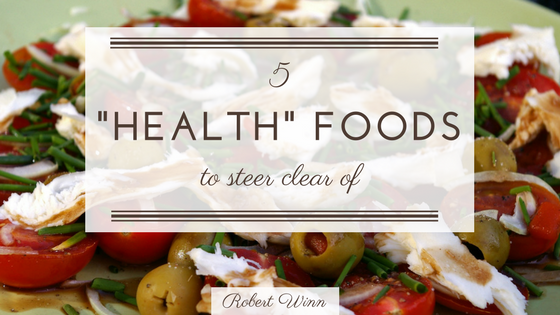Before you embark on a quest to eat well, you’ll need to accept that just about everything you’ll see in a supermarket aisle is misleading. So-called “health” foods may have sleekly designed, cheerful pictures of smiling children across the packaging, but you probably shouldn’t take a box home to your own until you’ve read the ingredients hidden away on the back. Odds are, the product you hold in your hands had a talented team of marketers who spent weeks deliberating on the best way to reach their target audience: You.
Unfortunately, the primary aim of these professionals isn’t to display the actual nutritional value of these products, but sell consumers on the image of health. Take the term “natural”as an example; the FDA currently sets no guidelines for what a “natural” food should be. This is mind boggling, because it means that even a food packed full of sugar and processed ingredients could conceivably dress itself up as a health food – and be believed.
On the other hand, you can usually trust in foods stamped with the USDA’s “ Certified Organic” labels, given that the USDA and FDA do mandate that the production of “organic” foods adhere to certain guidelines, and are generally considered to be healthier and better for you than non-organic foods. That said, there are still tiers to the “organic” label; foods that are labeled as being “made with organic ingredients” rather than being wholly “organic” are only required to have a 70% organic makeup. The remaining 30% of ingredients can be nonorganic, so long as they weren’t made using prohibited processes such as genetic engineering. It should be noted that these partially-organic foods cannot carry the reassuring USDA seal.
Relative security of organic labels aside, this means that even when companies slap trendy buzzwords onto a product to market it as a “health” food, there’s a significant chance that the food itself it isn’t actually good for you.
The following are a few “healthy” foods you should consider avoiding.
Salad Dressing
Salad tastes great – when it has a modest amount of delicious dressing to jazz up the otherwise unexciting vegetables. But the nutritional value of the greens is quashed under the preservatives, additives, and coloring mixed into store-bought dressing. To keep the taste but cut out the muck, consider whipping up a tasty vinaigrette in your own kitchen!
Here’s a recipe I personally love:
Combine the juice of 2-3 citrus fruits (lemon, lime, orange…even grapefruit) with zest from one, then slowly add olive oil to juice while whisking fast. Sprinkle in with salt and pepper to taste.
Remember…you don’t have to use all of it!
Protein Bars
It’s painful to say, but some protein bars might actually be worse for you than candy bars. The worst of them are loaded with high-fructose corn syrup, artificial colors, and preservatives. Check the back label – you might be hard-pressed to find any ingredients you recognize. Be vigilant, and check out my friend EvanTraining’s blog for tips on finding the most worthwhile protein bars.
Low-fat Yogurt
Saturated fats have long had an undeservedly bad rap. This is due in part to a furious campaign against them in the mid-20th century, when researchers mistakenly theorized that saturated fats were causing a heart disease epidemic. Food distributors began cutting out saturated fat and increasing trans fat content – which, as it turns out, is actually more harmful.
Low-fat foods aren’t better for you. Oftentimes, they’re chock full of trans fats and packed with sugars to compensate for the flavor lost with the saturated fat. For a healthier snack, buy plain Greek yogurt and flavor it yourself with a topping of fruit and/or nuts!
Trail Mix
Trail mix is a great idea – if it doesn’t have chocolate, salt, sugar, or dried fruit. Truthfully, you might be better off with a handful of plain almonds or walnuts. More often than not, trail mixes are loaded with salts and sweets to boost the flavor – but the high sodium and sugar content won’t do your body any favors. Even dried fruit isn’t always safe; the drying process usually involves adding unhealthy sulfites.
Make your own healthy mix!
Combine a variety of unsalted nuts (almond, cashews, walnuts) with no-sugar-added dried fruit and toasted oatmeal. Add a side of low-salt jerky for a great mixed protein/carb/fat snack that will curb your hunger!
“Diet” Anything
A diet frozen dinner is still a frozen dinner, and diet soda is still soda. While these food products might make some overtures towards health, it’s unlikely that they are actually healthy. Preservatives, colors, and unnecessary sugars still run rampant in so-called “diet” foods.
Maintaining a healthy diet can be difficult, and will require some research on your part to determine which foods are actually good for you, and which are simply marketed to look that way. But with a little effort and perseverance, you may find yourself looking and feeling better.

